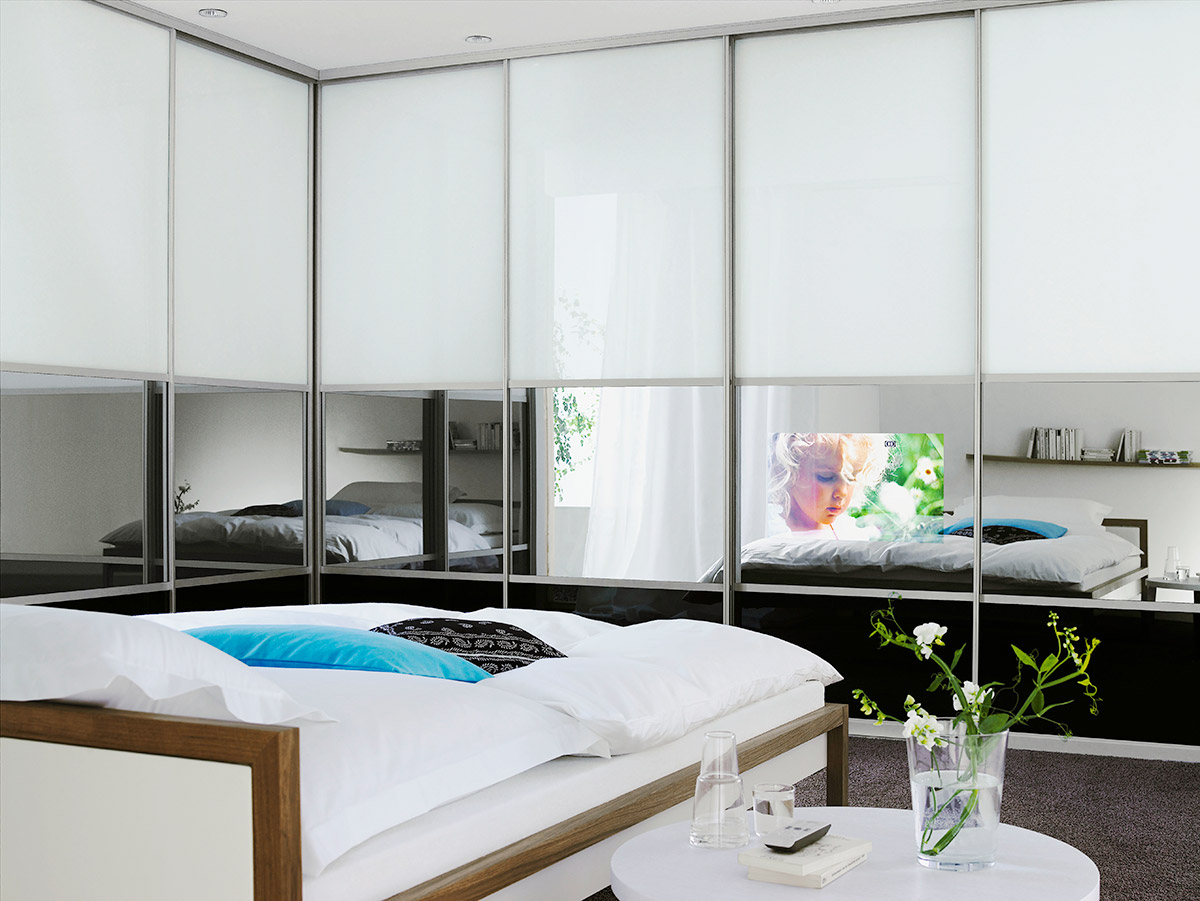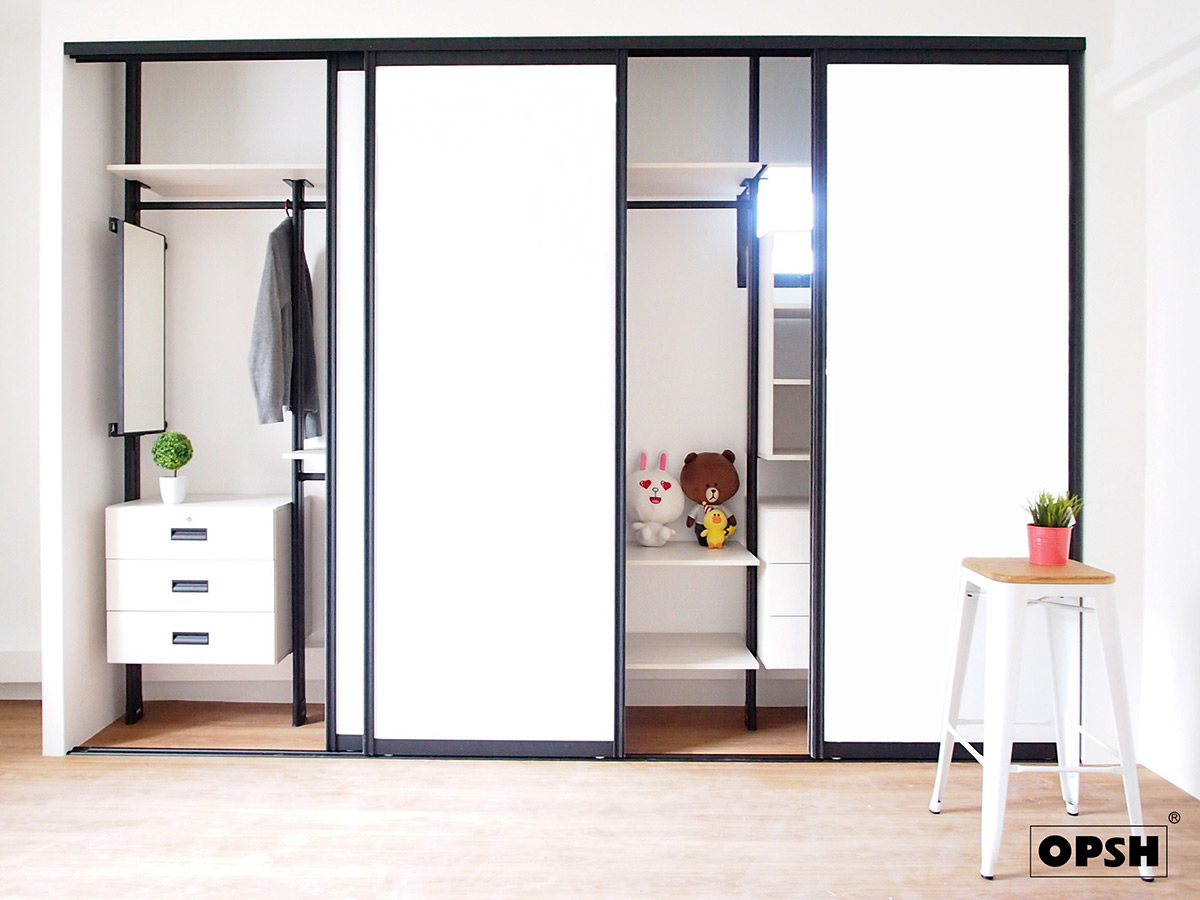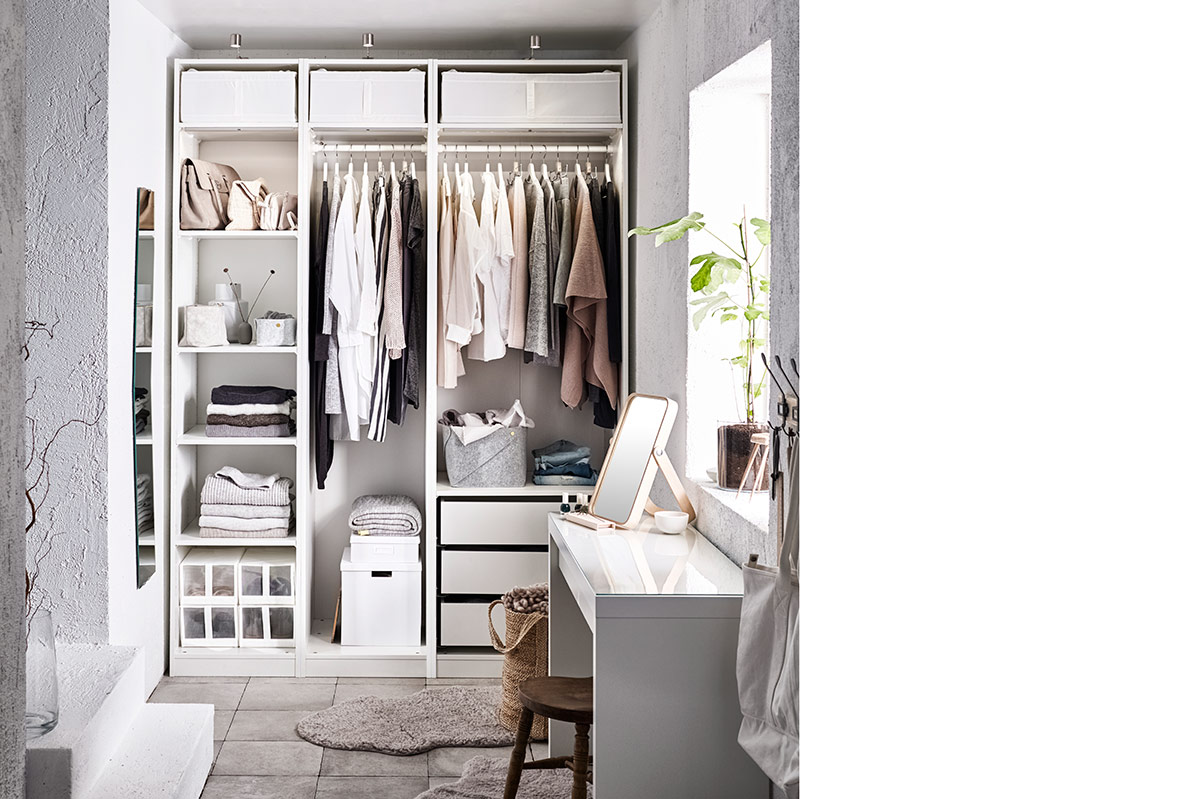While the bed claims the top spot in a room, the closet comes a close second. But dwellers of small spaces frequently face the all-too familiar predicament of trying to fit a full-sized wardrobe into an area with limited square footage. Many – but not all – choose to merge two adjoining rooms together to tackle the matter. Then, there’s the lot who prefer not to sacrifice a useable room just for storage. Here’s a lowdown of the best wardrobe types and layouts that’d not only help you maximise storage, but plan your room’s layout more effectively as well.
Customised solution
Seize every inch of space with built-in carpentry. The custom-designed wardrobe – as its name suggests – is constructed right into the walls of your room to fully maximise the available floor area. This makes it an ideal solution for even the smallest of spaces. Its tailored fit also means that there will not be any gaps at the sides or back of the closet that might gather dust.

Image credit: The Ewins Home
Mark Yong, the marketing director of The Ewins Group advises, “Corners are always good storage areas that are often otherwise wasted by bad space planning. As such, an L-shaped wardrobe makes full use of neglected but precious real estate in hard-to-reach corners.”
Remember: the built-in wardrobe is a permanent fixture, so the decision for this construction needs prudence and takes prior and proper planning. As constructing it requires a professional, always speak and discuss matters thoroughly before you embark on the project.
Make it to order
With made-to-order wardrobes, the possibilities are boundless. You can personalise everything from the material, colour and design of its facade to its interior storage and shelving units. Apart from enjoying the benefits of a custom-designed unit, homeowners can also utilise it to plan and configure their space more effectively.

Image credit: Studio FortyFour
When it comes to space planning, the shape and position of your wardrobe matters. Take for example, an L-shaped wardrobe. Position it strategically, and it can be used to create a cosy enclave for dressing up. If your room only permits a regularly shaped closet, let it double as a divider so you can enjoy your very own dedicated dressing area despite space constraints.
Use a pole and bar system
Everyone’s storage needs change over time. Perhaps it needs to accommodate an expanding clothes collection – or even an expanding family. Those who are concerned about the permanence of built-in wardrobes could consider investing in a pole system. Not only are homeowners able to customise the configuration of their wardrobe according to specific needs and preferences, they are also able to enjoy the flexibility of changing or moving the modules around many years down the road. In fact, the system can also be dismantled and moved to a new position – as you please.

Image credit: OPSH
One such flexible organising system is the OPSH pole system wardrobes that can be built in front of windows, air-con ledges and even inside bomb shelters. This allows you to consider utilising areas you never though possible to maximise every square inch of your space.
Standalones are great for tight corners
The standalone wardrobe is pre-fabricated; all you need to do is scout for one that tickles your fancy, then make your purchase and bring it back home. It saves time, hassle, and money put into constructing a unit that’s made from scratch. Although the selection of products it stores is incomparable to a built-in, you can still find a decent variety that varies in size, style and materials. This means that even discerning flat dwellers will be able to find one that suits their taste and interior theme.

Image credit: IKEA
Most homeowners are also more predisposed to acquire a freestanding unit because it can easily be moved around the house or replaced once it’s worn out. Take note: measurements are crucial when it comes to cash-and-carry pieces. Avoid disappointment by measuring your nook to a tee.
Another thing to take note of is the type of doors of a pre-fabricated wardrobe. IKEA’s sales leader for bedroom furniture Mun Ping Lam suggests going for sliding doors or open concept wardrobes for spaces with insufficient clearance for hinged doors. She adds, “To give the illusion of a bigger space, consider mirrored doors.”
This was adapted from an article originally written by Fidz Azmin published in the Febraury 2018 issue of SquareRooms.



